The strong force keeps also the protons together in the nucleus, despite their mutual
electrostatic repulsion.
Contemporary Physics Education Project
The Nuclear Force
The protons in the nucleus of an atom are positively charged. If protons
interact, they are usually repelled (pushed apart)
by the electromagnetic force. However, when two or more nuclei come very
close together (on the order of 1 femto-meter (fm) =10-15 meters),
their interaction becomes dominated by another force, the nuclear force, whose intensity is much higher (about 100 times) than the
electromagnetic (repulsive) force.
The nuclear force is also known as the strong force or the color force.
This is one of the four
fundamental forces
that govern all the interactions in the Universe.
The nuclear force keeps together the most fundamental of
elementary particles known, the
quarks,
which combine
to form the protons and neutrons in the atomic nucleus.
The nuclear force also keeps the protons together in the nucleus,
despite their mutual electrostatic repulsion.
Beyond the distance of 1 fm the nuclear force decreases sharply, becoming
practically negligible.
You might also be interested in:
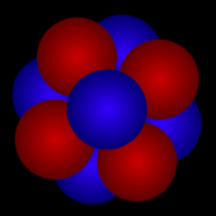
Atoms are composed of a massive, central nucleus surrounded by a swarm of fast-moving electrons. The nucleus is made up of protons and, in most cases, neutrons. Almost all of the mass (more than 99%) of
...more
A neutron is a sub-atomic (meaning it is smaller than an atom) particle. The nucleus of an atom is made up of neutrons and protons. Neutrons and protons are almost exactly the same size (a neutron has
...more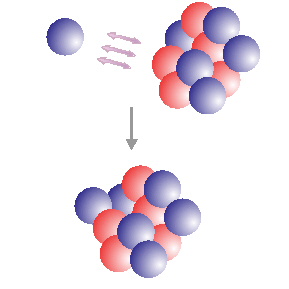
Neutron capture can occur when a neutron approaches a nucleus close enough for nuclear forces to be effective. The neutron is captured and forms a heavier isotope of the capturing element. When the new
...more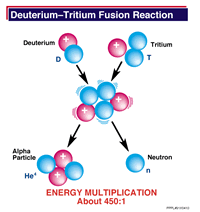
Nuclear fusion is a process where two or more nuclei combine to form an element with a higher atomic number (more protons in the nucleus). Fusion is the reverse process of nuclear fission. Fusion of light
...more
The protons in the nucleus of an atom are positively charged. If protons interact, they are usually repelled (pushed apart) by the electromagnetic force. However, when two or more nuclei come very close
...more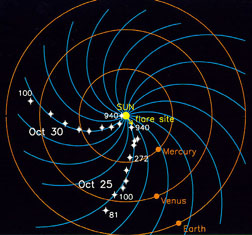
IMF stands for Interplanetary Magnetic Field. It is another name for the Sun's magnetic field. The Sun's magnetic field is enormous and is carried by the solar wind. The solar wind and magnetic field are
...more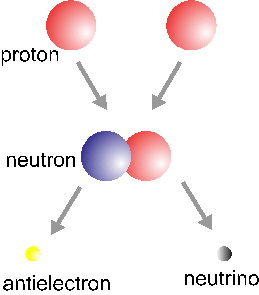
The basic Hydrogen fusion cycle involves four Hydrogen nuclei (protons) and two electrons and yields a Helium nucleus, two neutrinos and six photons. This process occurs in three steps: the first one is
...more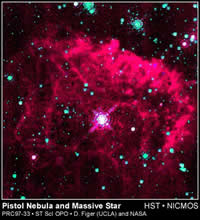
Fusion in the core of the stars is achieved when the density and temperature arising from the gravitational pressure are high enough. There are different fusion cycles that occur in different phases of
...more













